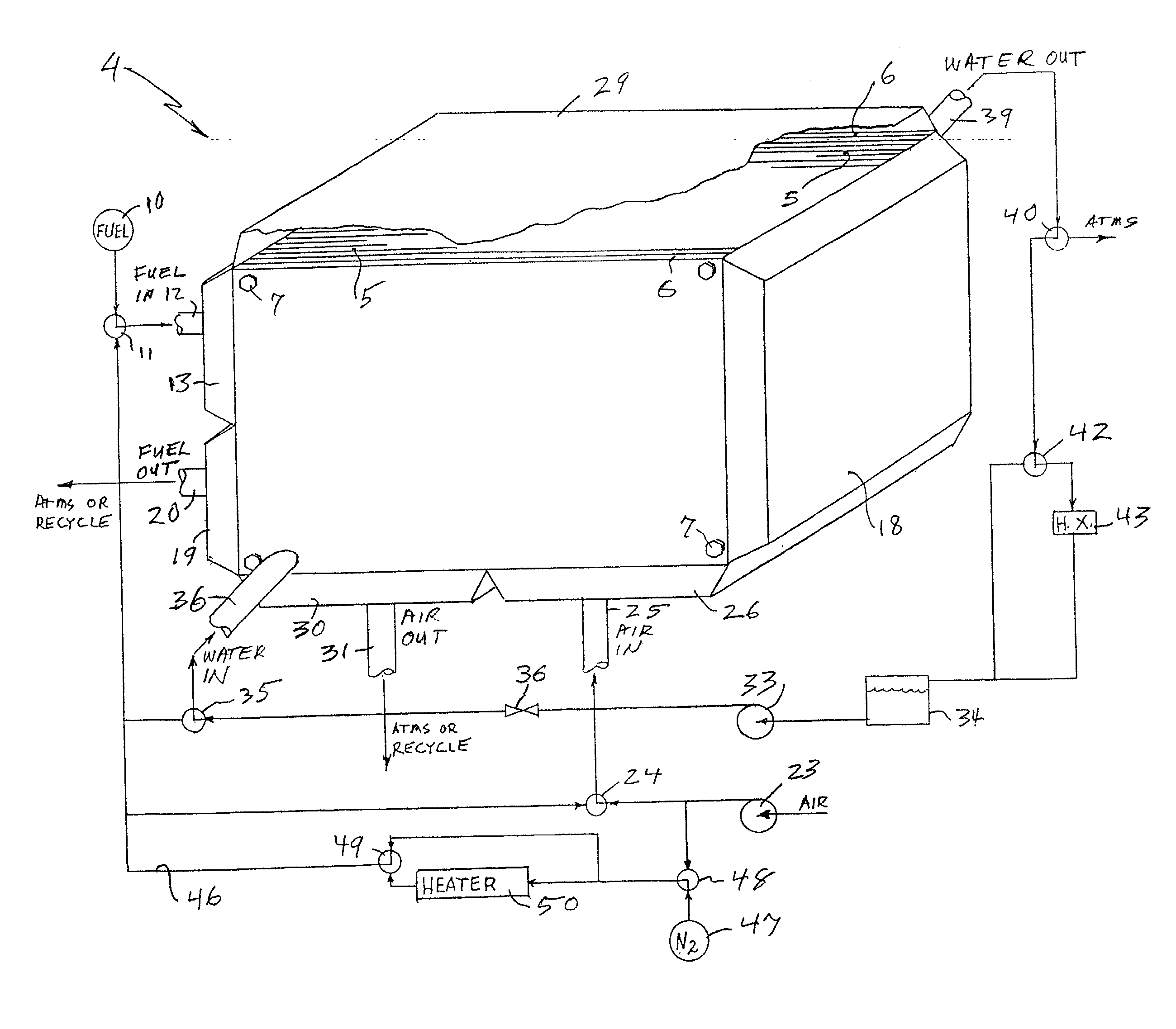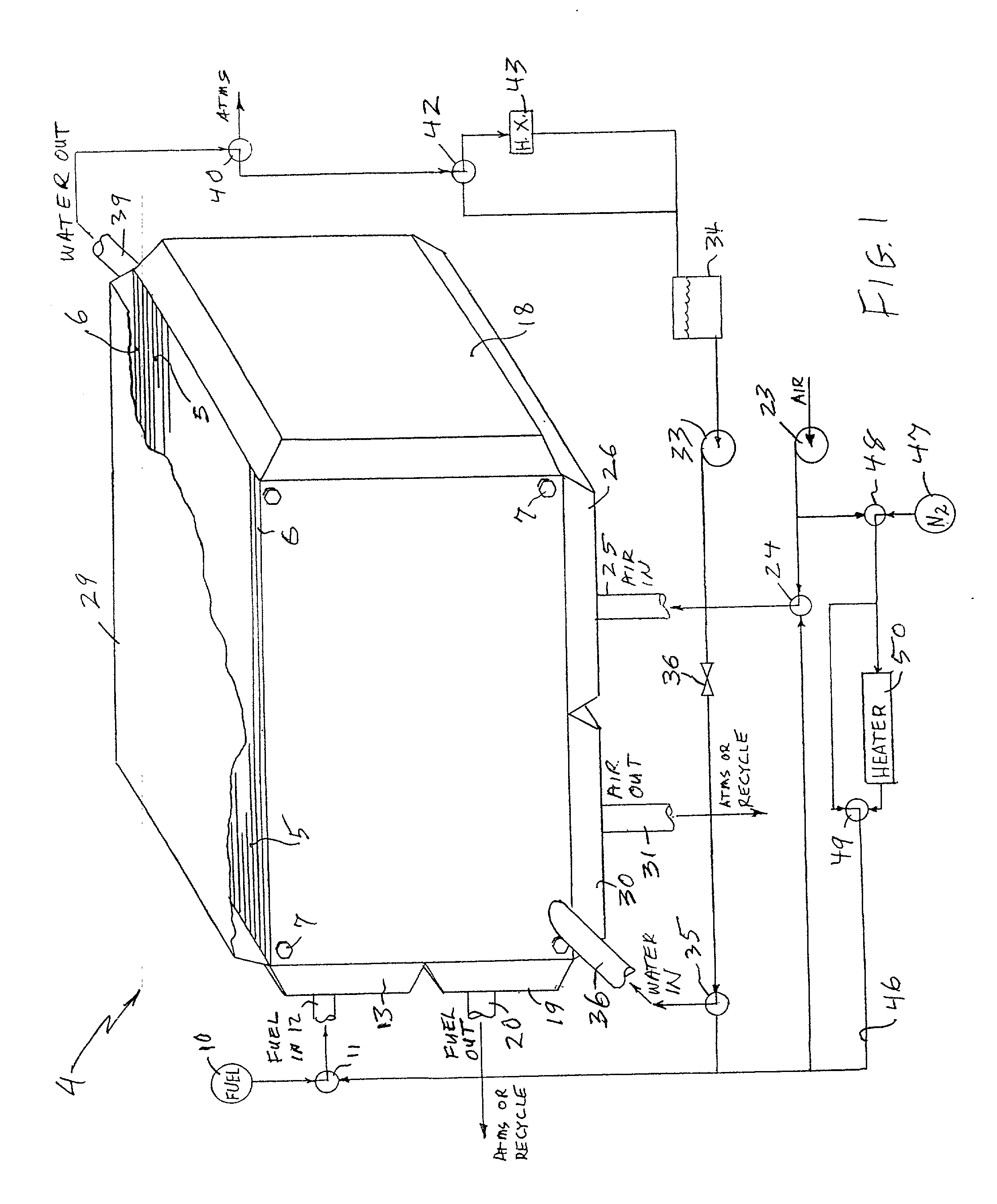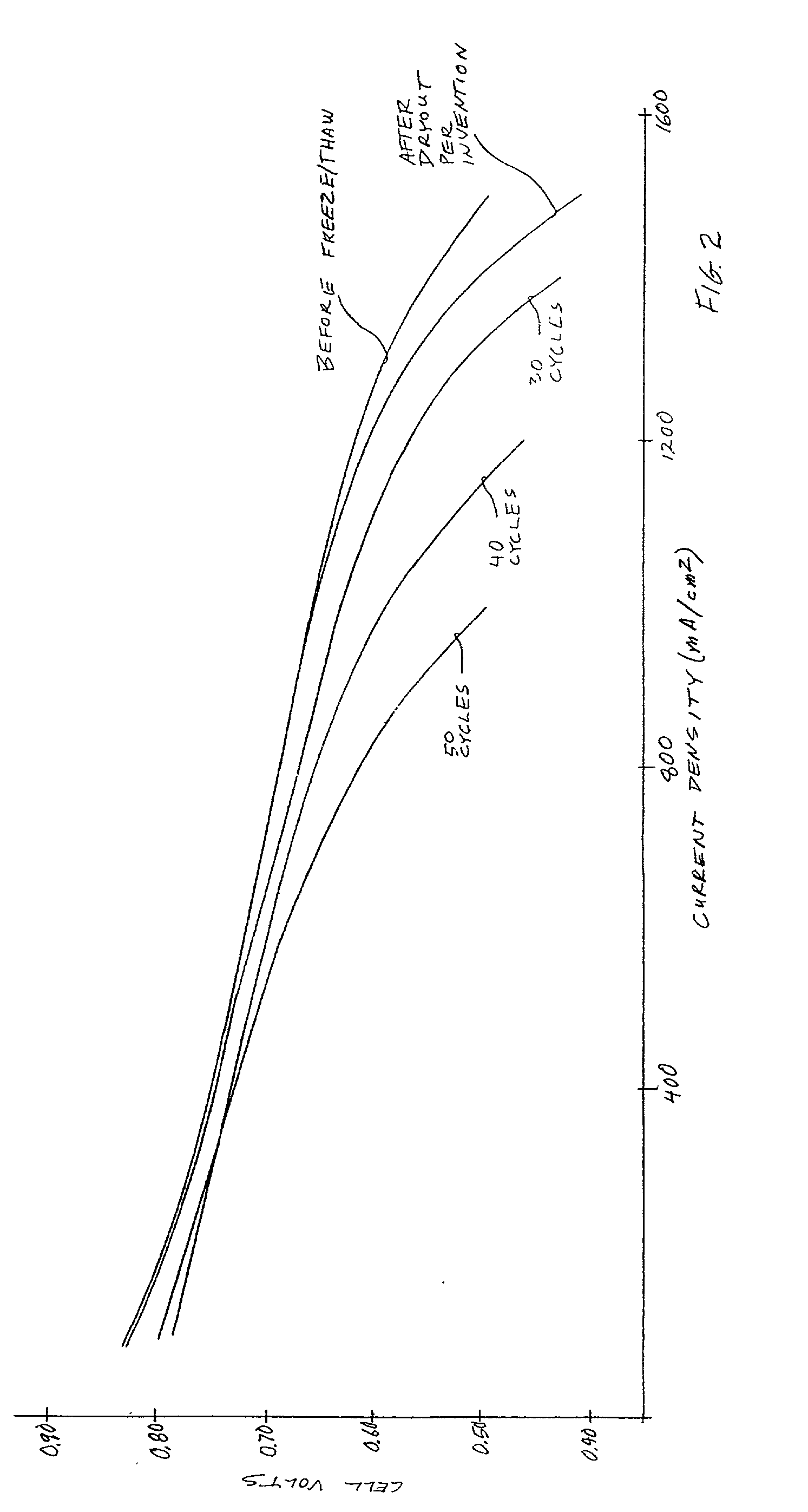Performance recovery process for PEM fuel cells
a technology of performance recovery and fuel cells, applied in the direction of fuel cells, solid electrolyte fuel cells, electrical equipment, etc., can solve the problem of substantially the same reduction of fuel cell stack performance, and achieve the effect of restoring performan
- Summary
- Abstract
- Description
- Claims
- Application Information
AI Technical Summary
Benefits of technology
Problems solved by technology
Method used
Image
Examples
Embodiment Construction
[0016] Referring to FIG. 1, a fuel cell stack 4 comprises a plurality of fuel cells 5 clamped together between pressure plates 6 by bolts 7. Fuel is supplied to the stack 4 from a source 10 through a valve 11, shown in its normal operating position, a fuel inlet 12 and a fuel inlet manifold 13. The fuel flows through the upper halves of the cells 5, to the right as seen in FIG. 1, and is turned around in a manifold 18, after which it flows through the lower half of the cells, to the left as seen in FIG. 1, to a fuel outlet manifold 19 from whence it flows through a fuel outlet 20 either to atmosphere or to some form of known fuel recycle loop (not shown).
[0017] In the example of FIG. 1, the oxidant is air, drawn from the atmosphere by a pump 23, which then flows through a valve 24, shown in its normal operating position, through an air inlet 25 to an air inlet manifold 26. The fuel flows upwardly (as seen in FIG. 1) in the right half of the fuel cells 5, is turned around within a ma...
PUM
| Property | Measurement | Unit |
|---|---|---|
| temperatures | aaaaa | aaaaa |
| diameter | aaaaa | aaaaa |
| diameter | aaaaa | aaaaa |
Abstract
Description
Claims
Application Information
 Login to View More
Login to View More - R&D
- Intellectual Property
- Life Sciences
- Materials
- Tech Scout
- Unparalleled Data Quality
- Higher Quality Content
- 60% Fewer Hallucinations
Browse by: Latest US Patents, China's latest patents, Technical Efficacy Thesaurus, Application Domain, Technology Topic, Popular Technical Reports.
© 2025 PatSnap. All rights reserved.Legal|Privacy policy|Modern Slavery Act Transparency Statement|Sitemap|About US| Contact US: help@patsnap.com



